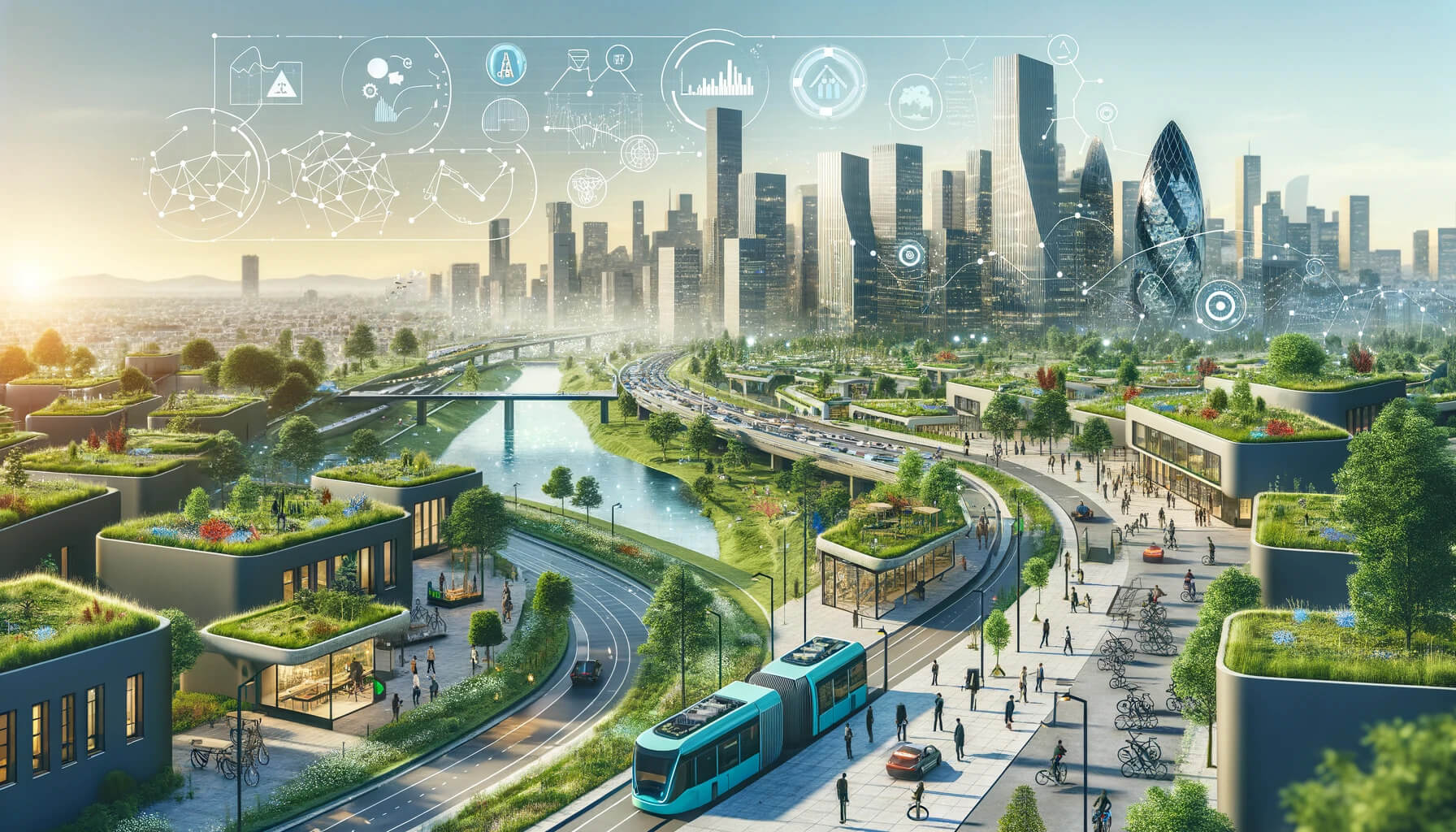Picture your favourite city, maybe one you live in or visit often.
Now, imagine it’s like a giant puzzle that’s always been put together, with pieces like houses, parks, roads, and shops. But this isn’t just any puzzle—it’s one that needs to keep getting better, making sure there’s enough room for everyone, keeping the air clean, and making it easy for you to get around, whether you’re walking, biking, or taking the bus.
The big question is, how do we keep improving this puzzle so it works for everyone, without making our planet unhappy or spending too much money?
This is where optimisation models come into play. Think of these as super smart helpers who can look at the puzzle and figure out the best way to fit the pieces together. They help decide where new parks should go, how to make traffic smoother, or where to build new bike lanes, all while keeping our air clean and not breaking the bank.
This blog is a friendly guide that shows us how cities can use these smart helpers to make better decisions. It’s all about making our cities nicer places to live, now and in the future, by solving the puzzle in the smartest way possible. So, let’s dive in and discover how we can make our cities better, one piece of the puzzle at a time!
The Imperative for Sustainable Urban Planning
Urbanisation’s rapid clip, propelled by a quest for opportunities and a better quality of life, brings to light an urgent need for a paradigm shift in how we conceive and nurture our urban spaces.
The United Nations’ projection that 68% of the world’s population will be urban by 2050 is not just a statistic—it’s a clarion call for action. Sustainable urban planning emerges as a doctrine, advocating for development that harmonises economic growth with environmental stewardship and social equity. It’s about creating cities that not only thrive today but also offer fertile ground for future generations.
The Role of Optimisation Models in Urban Planning
At the heart of sustainable urban planning lies the power of optimisation models—a confluence of algorithms, data analytics, and systems thinking. These models are not just tools; they are visionaries that enable urban planners to navigate the complexity of city ecosystems.
By processing vast datasets on demographics, traffic patterns, land use, and environmental indicators, optimisation models can simulate the outcomes of planning decisions, offering a glimpse into the future of urban development.
These models excel in balancing competing priorities, such as the need to expand public transportation networks while minimising environmental impact, or the desire to increase housing density without eroding public green spaces.
They can optimise the placement and design of infrastructure to maximise utility and accessibility, reduce carbon footprints, and enhance the overall quality of urban life.
Creating Cost-Efficient Urban Spaces
The beauty of optimisation models lies in their ability to uncover cost-efficient solutions to urban challenges. In an era where budget constraints are a ubiquitous reality, these models provide a framework for maximising value from every dollar spent.
For instance, by optimising energy use in public buildings or streamlining waste collection routes, cities can achieve significant savings while advancing sustainability goals. These models can also guide investment in renewable energy sources and green infrastructure, ensuring long-term savings and environmental benefits.
Meeting the Growing Demands of the Population
As urban populations surge, the demands on infrastructure, services, and resources intensify. Optimisation models stand at the ready, equipped to forecast future needs and plan accordingly. They enable urban planners to take a proactive stance, designing flexible and scalable solutions that can adapt to demographic and technological shifts.
From planning new schools and healthcare facilities to expanding public transportation networks, these models ensure that urban development is not just reactive but anticipatory, paving the way for cities that not only grow but flourish.
Case Studies: Optimisation Models in Action
The practical application of optimisation models in urban planning is not a theoretical exercise but a living, breathing reality in cities worldwide.
Consider the city of Singapore, renowned for its lush skyscrapers and impeccable urban design. Through the strategic use of optimisation models, Singapore has effectively managed its limited space to create an urban environment that balances density with livability, integrating green roofs, vertical gardens, and smart transportation networks. These initiatives, underpinned by sophisticated modelling, have positioned Singapore as a paragon of urban sustainability.
Another illustrative example is Copenhagen, Denmark’s endeavour to become the world’s first carbon-neutral capital by 2025. Optimisation models have played a crucial role in planning its transition to green energy, optimising energy consumption across the city, and reducing greenhouse gas emissions. These models have informed the development of bicycle-friendly infrastructure and public transport routes, significantly cutting down the reliance on fossil fuel-powered vehicles.
Overcoming Challenges in Implementing Optimisation Models
Despite their transformative potential, the path to integrating optimisation models into urban planning is fraught with challenges. One significant hurdle is the siloed nature of urban data, which can impede the comprehensive analysis required for effective optimisation.
Bridging these data gaps requires a concerted effort to foster collaboration between governmental agencies, private sector entities, and the community.
Another challenge lies in the complexity and computational demands of optimisation models, which necessitate advanced technical expertise and resources. Ensuring that urban planners and policymakers have the skills and tools to leverage these models is essential for their successful implementation.
Moreover, public engagement and buy-in are critical for the success of optimisation-driven urban projects. Transparent communication about the benefits of proposed changes and involving communities in the planning process can help mitigate resistance and foster a sense of ownership and commitment to sustainable urban development.
The Future of Sustainable Urban Development
Looking forward, the integration of optimisation models in urban planning heralds a new era of sustainable urban development.
As cities continue to grow, the application of these models will become increasingly sophisticated, leveraging advancements in artificial intelligence, machine learning, and big data analytics to tackle complex urban challenges with unprecedented precision and adaptability.
The future of urban planning also points towards a more holistic approach to sustainability, where optimisation models account not only for environmental and economic factors but also for social equity and well-being. By doing so, cities can aspire to create not just more efficient and sustainable spaces but also more inclusive and equitable urban environments.
Conclusion: Charting a Course Towards Sustainable Cities
In conclusion, the integration of optimisation models into urban planning offers a promising pathway to addressing the dual challenges of urban growth and sustainability. By harnessing these models, cities can navigate the complexities of urban development with an informed, strategic approach that balances economic, environmental, and social priorities.
As we stand on the brink of transformative change, the stories of cities like Singapore and Copenhagen inspire a vision of what’s possible when innovation meets intention. The journey towards sustainable urban spaces is a collective endeavour, one that requires the collaboration of planners, policymakers, communities, and technologists.
Together, guided by the principles of optimisation and sustainability, we can chart a course towards a future where cities are not just places to live but places that enhance our quality of life, today and for generations to come.







No comment yet, add your voice below!